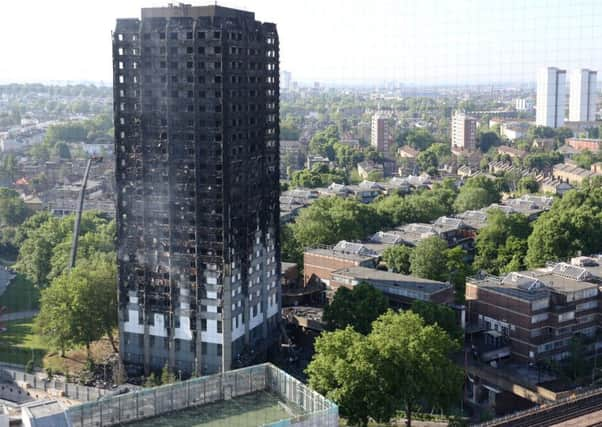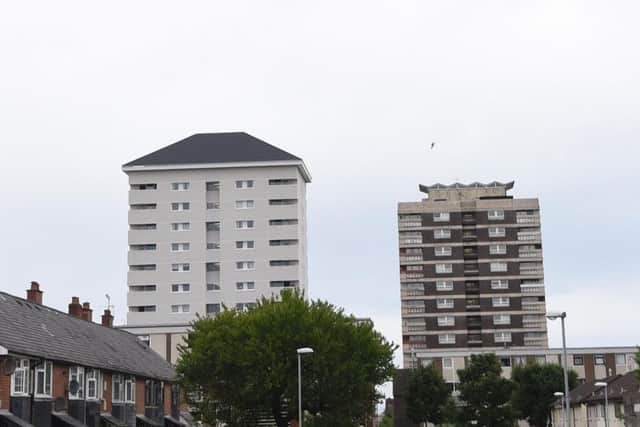Post-Grenfell fire review finds work still needed in NI tower blocks


A report summarising inspections of Housing Executive properties across Northern Ireland, published today, indicates whilst the cladding systems used on tower blocks in the Province do meet regulations, action is still needed to make all properties “fully compliant”.
The inspections began in the wake of the blaze at 24-storey Grenfell Tower, west London, on June 14 last year.
Advertisement
Hide AdAdvertisement
Hide AdThe Housing Executive defines a “tower block” as being any of its buildings which are taller than 18 metres (59ft).


In all, there are 33 Housing Executive buildings which meet this criteria in Northern Ireland, containing about 1,900 dwellings.
Since the cladding on Grenfell Tower was thought to have contributed to that blaze, large-scale testing began across the UK to check the cladding on other buildings.
Today’s report largely focuses on the four Northern Ireland Housing Executive buildings which use cladding.
Advertisement
Hide AdAdvertisement
Hide AdWhilst it emphasises that the four towers – Cuchulainn and Eithne Houses (in north Belfast) and Whincroft and Carnet House (in east Belfast) – have a different type of cladding to the kind used on Grenfell, it goes on to identify other problems.


It indicates that the addition of pitched roofs to Cuchulainn and Eithne towers as part of a recent major refurbishment meant smoke which had previously been able to vent out into the open air from flat roofs would now vent into “an enclosed roof”.
It adds that Whincroft House “had a similar issue”.
This encloses stairwell vents used for smoke clearance during a fire.
It lists “reinstatement of smoke ventilation provisions” as being an “ongoing” matter, and concludes: “The cladding systems installed on the four Housing Executive tower blocks meet current building regulation standards but due to the compromised smoke ventilation/extraction it will not be fully compliant until all remediation measures have been completed.”
Advertisement
Hide AdAdvertisement
Hide AdThe report also adds that the Housing Executive should “consider installing sprinkler systems within its high-rise accommodation”. It states this “may give greater confidence to residents”, but also says that the “practical and value for money” implications must be considered – noting that such a move could cost up to £4 million.
The report was compiled by a body called the Independent Reference Group which takes in fire brigade personnel and housing officers, and is headed by Professor Alastair Adair, deputy vice-chancellor of Ulster University.